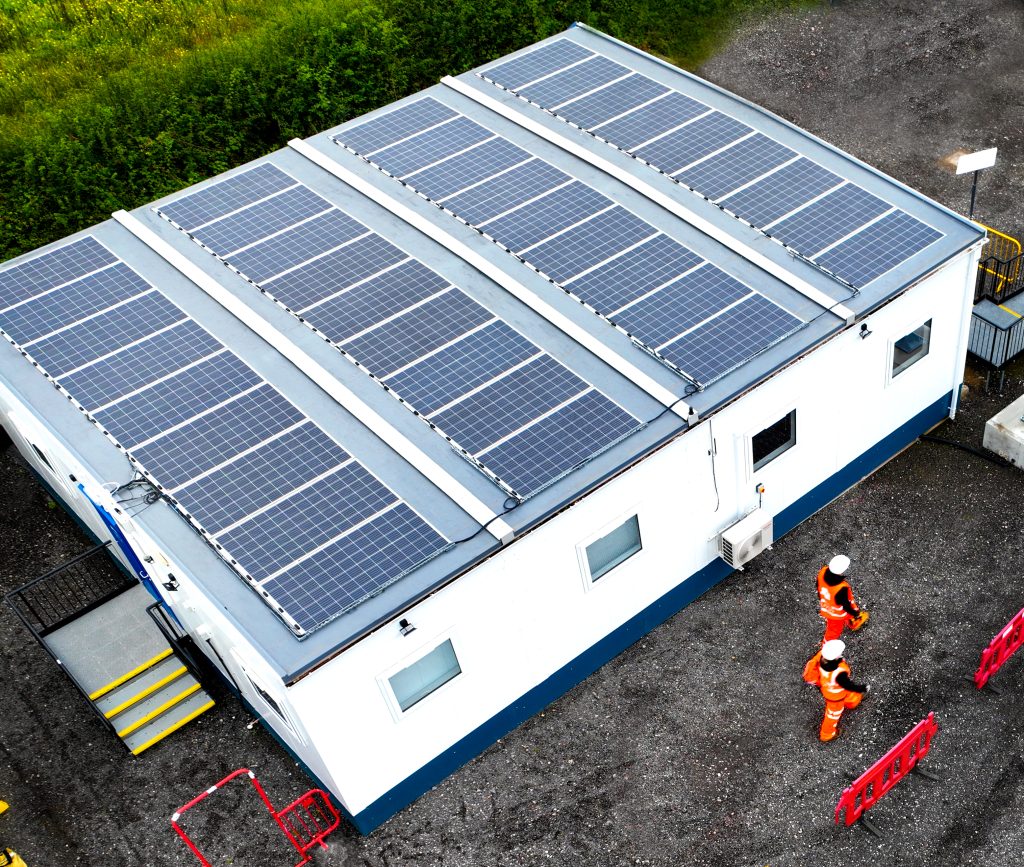Sector - Energy, Fuel & Utilities
Diesel is Disappearing – Are You Ready?

Ciaran Cotter, Technical Director at Solivus explores the feasibility and cost-effectiveness of embracing cleaner alternatives to diesel generators in the construction sector.
It’s hard to believe that not so long ago diesel was widely touted as a superior fuel choice. The rationale was simple: diesel engines use fuel more efficiently and therefore produce less CO2. This meant you could keep your fuel costs down while doing your bit for the planet.
With this, it’s easy to see why the construction industry has traditionally relied on diesel generators to get the job done. From powering cranes and excavators to bulldozers, they have long been used as the off-grid power supply of choice for construction sites worldwide.
The death of diesel
But this is changing and as the world strives for a more sustainable lower carbon future, diesel emissions have come under much closer scrutiny. The result is an increasing urgency for construction to pave the way for a diesel-free future, and fast.
This was seen last year as the Construction Leadership Council launched its ‘Zero Diesel Sites Route Map’, a key element of its CO2nstruct Zero programme, which sets out to eliminate diesel from 98% of construction sites by 2035.1 Importantly, the Route Map advocates increased on-site renewable energy, with up to 500 construction companies signing up to significant-zero diesel reduction strategies by this year. It follows the 2022 removal of red diesel rebate from construction.
Of course, though, even with the best intentions the reality is that delivering diesel-free construction sites on the ground front hasn’t always been simple. But why, you may ask?
Inherently, solar presents the obvious diesel alternative, enabling construction sites to produce their own energy free of emissions and pollutants. Furthermore, according to the International Energy Agency, solar PV is now the cheapest energy source in history – even without subsidies.2 This becomes even more appealing in the context of energy market volatility, bringing uncertainty into diesel costs.
A bright idea
However, solar has come with its problems for construction site use. Fundamentally, the roof structure of modular cabins used on sites are often not strong enough to take the weight and windage of conventional solar without being structurally bolstered. This results in unnecessary complexity and extra cost. The rigid panel form of conventional solar panels also makes it difficult to easily store and transport cabins for further use on project completion. As a result, solar hasn’t been as widely used for onsite generation as it could.
Fortunately then, there are now much more flexible, cost-effective solutions. Thanks to advances in technology, the latest generation of innovative lightweight solar panels are a fraction of the weight of conventional panels and have more universal applications for fixing methods which have opened up new roof space opportunities.
A great example of this opportunity can be found in Solivus’ recent work with one of the world’s biggest infrastructure names. Hereby, the challenge was to create a solar-fuelled alternative to the diesel generators currently used to power our client’s construction site cabins portfolio.
To achieve this, Solivus created an innovative, low carbon set up which combines lightweight solar panels with a battery storage system and a backup diesel generator. An off-grid, decentralised, self-sufficient energy hub. The system works by storing the excess energy generated by the solar panels in a connected battery storage unit. As a result, site cabins can be powered continuously, with the system automatically releasing the reserve energy even when there is no sunlight.
The recent pilot project – a modular building with a roof space of approximately 100m2 – is estimated to have saved our client up to 14,416 Kg of carbon dioxide emissions, 5223 litres of diesel with a gross annual saving of £9,140, while ensuring a reliable, resilient, clean energy supply. This is a solution they now plan to roll out to their clients.
Underscoring this too is a dedicated operations and maintenance (O&M) programme designed to ensure the project continues to reach its full value potential. This is supported with a five-year workmanship warranty, a twelve-year product warranty and a twenty-five-year performance warranty.
A front footing
The transition from diesel-powered construction sites to diesel-free alternatives is upon us. Though it may mean investment and extra resources, those that make the change now will most likely have an immediate reward in terms of improved efficiencies, reduced CO2 and reduced costs.
1 https://www.constructionleadershipcouncil.co.uk/wp-content/uploads/2023/06/Zero-Diesel-Route-Map-June-2023.pdf 2 https://www.forbes.com/sites/jamesellsmoor/2019/06/15/renewable-energy-is-now-the-cheapest-option-even-without-subsidies/
Related Articles
More Energy, Fuel & Utilities News
- Driving energy investment
2 Oct 25
Energy Secretary Ed Miliband has outlined the role of Great British Energy,
- Nuclear security boost
1 Oct 25
The UK and US have signed a new agreement designed to accelerate nuclear power projects.
- National Grid rolls out Centralised Autonomous Drone Inspections
19 Sep 25
National Grid Rolls Out Centralised Autonomous Drone Inspections across its network





